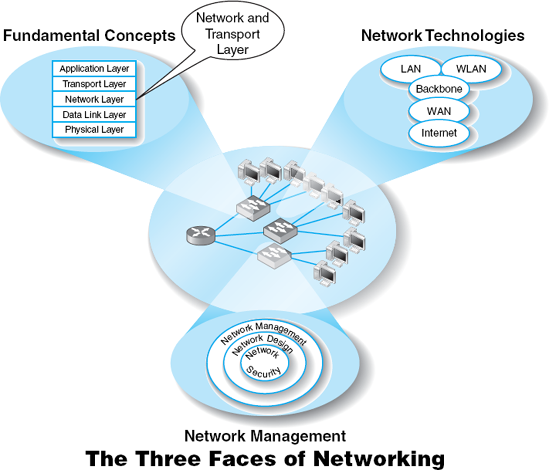Chapter 5. NETWORK AND TRANSPORT LAYERS

THE NETWORK layer and transport layer are responsible for moving messages from end to end in a network. They are so closely tied together that they are usually discussed together. The transport layer (layer 4) performs three functions: linking the application layer to the network, segmenting (breaking long messages into smaller packets for transmission), and session management (establishing an end-to-end connection between the sender and receiver). The network layer (layer 3) performs two functions: routing (determining the next computer to which the message should be sent to reach the final destination) and addressing (finding the address of that next computer). There are several standard transport and network layer protocols that specify how packets are to be organized, in the same way that there are standards for data link layer packets. However, only one protocol is in widespread use today: TCP/IP, the protocol used on the Internet. This chapter takes a detailed look at how TCP/IP works.
OBJECTIVES ▾
Be aware of the TCP/IP protocols
Be familiar with linking to the application layer, segmenting, and session management
Be familiar with addressing
Be familiar with routing
Understand how TCP/IP works
CHAPTER OUTLINE ▾
INTRODUCTION
TRANSPORT AND NETWORK LAYER PROTOCOLS
Transmission Control Protocol (TCP)
Internet Protocol (IP)
TRANSPORT LAYER FUNCTIONS
Get Business Data Communications and Networking now with the O’Reilly learning platform.
O’Reilly members experience books, live events, courses curated by job role, and more from O’Reilly and nearly 200 top publishers.

